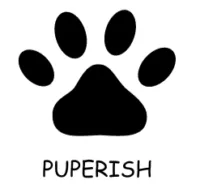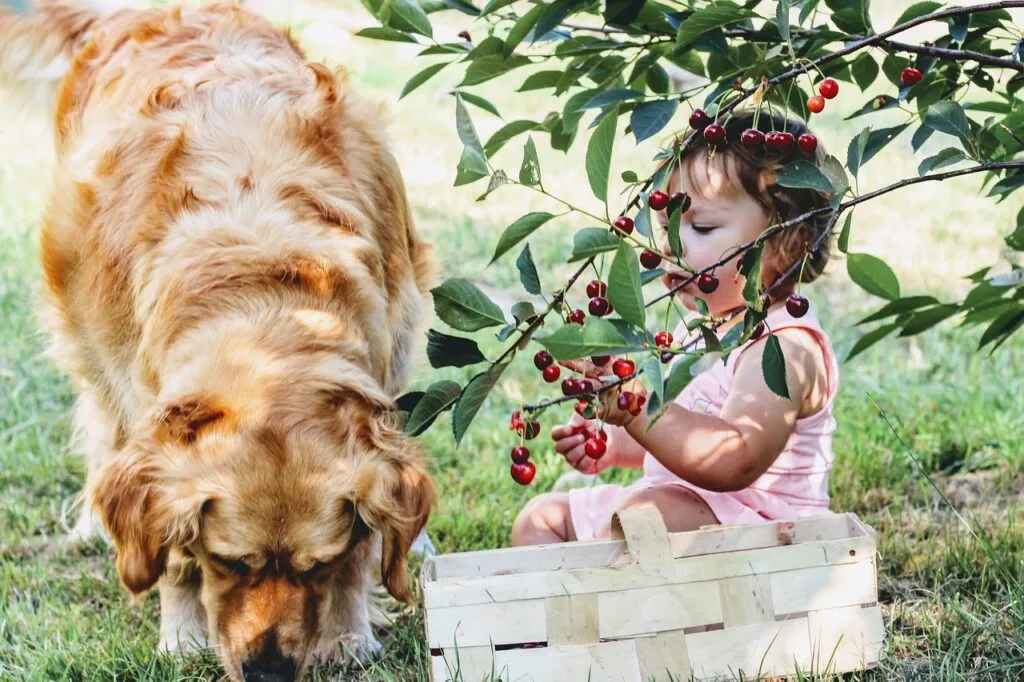
Choosing the ideal diet for your beloved four-legged friend is often a difficult task, but it’s the first step to ensuring their optimal health and happiness. Many pet owners wonder whether to choose between dry food and appealing wet food. Each option has its own benefits, so determining the “better” choice will depend on a variety of factors tailored to your dog’s individual needs. These considerations include aspects such as ethnicity, current health status, physical activity level, and even sophisticated taste preferences. By carefully evaluating these individual characteristics, you can make an informed decision that best suits your dog’s specific needs.
Dry Food for Dogs

Pet nutrition has evolved significantly, and dry dog food is playing an important role in this change. In 1860, James Spratt introduced the breakthrough innovation of biscuit dog food, marking the beginning of modern dog snacks. However, the real revolution did not occur until his 1950s, propelled by advances in extrusion technology. This breakthrough allows pet food companies to develop the first extruded dry pet food, offering dog owners an innovative way to provide a convenient and balanced diet for their dogs. Ta.
How is Dry Food Produced?
Dry dog food, known as kibble in the US and biscuits in the UK, goes through a careful process to ensure optimal nutrition for your beloved pet. It all starts with a precise blend of meats, grains, and essential nutrients that are carefully ground to create a balanced blend. This mixture is then exposed to high temperatures to effectively remove moisture and form particles. Think of this as an approach to cooking. However, the focus is on producing denser, drier products that allow for long-term storage.
To achieve the iconic croquette shape, the mixture is passed through a special machine called an extruder, which shapes it into a recognizable shape before drying. But the process doesn’t end there. Additional elements such as fats, oils, vitamins, and minerals are sprayed into the kibble to fortify essential nutrients for your furry friends’ health.
With advancements in pet nutrition, some modern dry food brands now include live probiotics to further improve digestive health and strengthen your pet’s immune system. Once processed, the croquettes are immediately packaged to maintain freshness. The final result? Dry dog food with a moisture content of 3 to 12 percent provides pet owners with a convenient, clean option that is suitable for long-term storage, making it a practical option for many households.
Advantages
When it comes to selecting the perfect sustenance for your cherished furry friend, it’s imperative to acknowledge the invaluable advantages that dry food provides. This type of nourishment boasts numerous health benefits tailored to enhance your dog’s well-being, thereby streamlining your experience as a devoted pet parent.
Here are the benefits of dry foods for dogs:
Dry food is best in terms of convenience as it has a long shelf life and pet owners don’t have to stock up and go to the store as often. Additionally, because it is not perishable, opened bags remain fresh even without refrigeration, making them ideal for filling feeders and bulk containers on particularly busy days.
Not only does dry food support dental health by naturally removing plaque through chewing, studies have shown that dogs fed this diet typically have fresher breath and healthier mouths. I am. Certain types of kibble also have special tooth cleaning properties.
Dry food is cost-effective per serving, so it can prove to be a budget-friendly option, especially when purchased in bulk. Despite its affordable price, it offers excellent nutritional value for dogs and has a lower fat content compared to wet food alternatives, helping with precise portion control and weight management.
In addition to promoting dental health, dry food also helps keep the area around the mouth of long-haired breeds clean and reduces the chance of skin problems. Some premium kibble formulations contain probiotics to further support digestion and strengthen your immune system.
Pairing dry food with puzzle toys or slow eaters can not only provide mental stimulation, but also prevent rapid consumption and create a healthier eating pace for your furry companion.
Disadvantages
Dry dog food unquestionably provides convenience and a well-rounded nutritional profile. Nevertheless, it’s essential to consider potential drawbacks. Here are some important points to keep in mind:
- Taste and Texture: Compared to wet food, the aroma and texture of kibbles may not be as appealing, which could pose a challenge for picky eaters.
- Preservatives: Many dry food brands incorporate preservatives to extend shelf life. However, some pet owners may prefer fresher, less processed options for their furry companions.
- Hydration: Dry food doesn’t contribute to your dog’s water intake. This could be problematic for pets that struggle to drink enough water, are prone to dehydration, or have specific health issues.
- Dental Health: While kibble can aid in cleaning teeth, its hard texture might be difficult for dogs with dental sensitivities to chew.
- Variety vs. Bulk Buying: Purchasing dry food in bulk can be cost-effective, but it may limit the flavor variety available for your pet’s enjoyment.
READ ALSO: How To Choose Healthy Dog Food For Your Dog?
Wet Dog Food

Before extruded kibble became widely available in the 1950s, wet canned pet food was the preferred choice among dog and cat owners. The debut of Ken El Ration in 1922 marked the beginning of canned dog food made from horse meat. It was not until his 1930 that canned cat food appeared on the market. Despite the switch to dry food, wet food continues to play an important role in many pets’ diets and is prized for its versatility and deliciousness. Additionally, wet food acts as a moisture-rich alternative to dry food, covering your pet’s nutritional and hydration needs.
Processing Method for Wet Dog Food
The process begins by grinding the protein source, then adding a blend of essential vitamins, minerals, and grains to prepare a nutritious sauce. Cooking and sterilizing this mixture creates a product with significantly increased moisture content compared to dry food. Wet food typically consists of pieces of meat marinated in sauce or jelly and is known for its strong flavor. Because it contains a lot of water, we recommend that you consume it immediately after opening. This careful process results in a meal that is rich in nutrients, easy to hydrate, and when combined with dry food is typically low in carbohydrates and high in fat and protein.
Benefits
If you’re seeking a means to enhance your canine companion’s well-being and joy, wet food might just be the solution. Here’s why:
- Hydration Boost: With moisture levels typically ranging from 78% to an impressive 87.5%, canned foods are an excellent source of hydration for dogs who may not drink enough water. Additionally, they can provide support for pups dealing with kidney or urinary issues.
- Flavor Explosion: Wet food tantalizes your dog’s senses with its rich aromas and textures, making it particularly appealing to picky eaters. This gourmet experience ensures that even ailing or elderly dogs receive the essential nutrition they require.
- Easy to Enjoy: The soft and chewy textures of wet food make it an ideal choice for dogs with dental problems or sensitive stomachs. Furthermore, options containing prebiotics and probiotics can aid digestion.
- Protein-Rich, Low in Carbs: Many varieties of wet food are packed with protein, making them suitable for active dogs. They also tend to have lower carbohydrate content, which promotes overall canine health. Additionally, specialized formulas cater to dogs with carbohydrate sensitivities.
- Satisfying and Supports Weight Management: The high moisture content of wet food helps dogs feel fuller for longer, reducing the likelihood of overeating and aiding weight management.
- Variety is Key: Wet food’s diverse textures and flavors make it easy to introduce dogs to different types of food, ensuring they adapt well to dietary changes.
- Making Mealtimes Meaningful: Wet food is often ideal for mixing in medications or supplements. For dogs with dental issues, it provides a pain-free eating experience. Moreover, it offers an opportunity to strengthen the bond between you and your furry friend during mealtime.
Drawbacks
While wet dog food undoubtedly boasts numerous advantages, it’s essential to consider the potential drawbacks before making your decision. Here are the key points to keep in mind:
- Mess and Odor: Wet food may result in a messier feeding experience compared to dry food. Residue can accumulate in your dog’s bowl and cling to their fur. While the stronger aroma may be enticing for your furry friend, it might not be as pleasant for you.
- Shelf Life and Storage: Wet food has a shorter shelf life once opened, requiring prompt consumption or refrigeration. Additionally, it occupies more storage space than dry food, which could be a factor to consider, especially for pet owners with limited storage space.
- Portion Control Challenges: Wet food often comes in predetermined portion sizes, such as cans or pouches, making it more difficult to adjust servings for dogs with specific dietary requirements.
- Cost: Wet dog food typically carries a higher price tag per calorie compared to dry food. This expense can accumulate, particularly for owners with larger dogs or multiple pets.
- Dietary Considerations: While wet food can be a boon for picky eaters, it may also contribute to overeating, posing a concern for dogs prone to weight gain. Balancing palatability with portion control becomes essential in managing your pet’s diet effectively.
Conclusion
So which option is better? The choice between wet and dry food ultimately depends on the individual needs of your four-legged pet. Dry food is practical and offers dental health benefits, while wet food boasts hydration and an appealing taste. Perhaps the ultimate solution lies in combining both to ensure your furry friend enjoys the best of both worlds. As an avid pet owner, it’s your responsibility to pay attention to your dog’s preferences and adjust their diet accordingly. Because a happy dog is a healthy dog!
Also, don’t forget that choosing the perfect hood plays an important role in ensuring your furry companion lives a long and happy life. It is of utmost importance to consult your veterinarian for personalized advice tailored to your dog’s breed and individual needs, as each dog has different nutritional needs.

I am a dedicated writer, specializes in crafting captivating content centered around Dogs. With a keen eye for detail and a passion for dogs, I delivers engaging narratives that celebrate the bond between humans and their Doggos.


